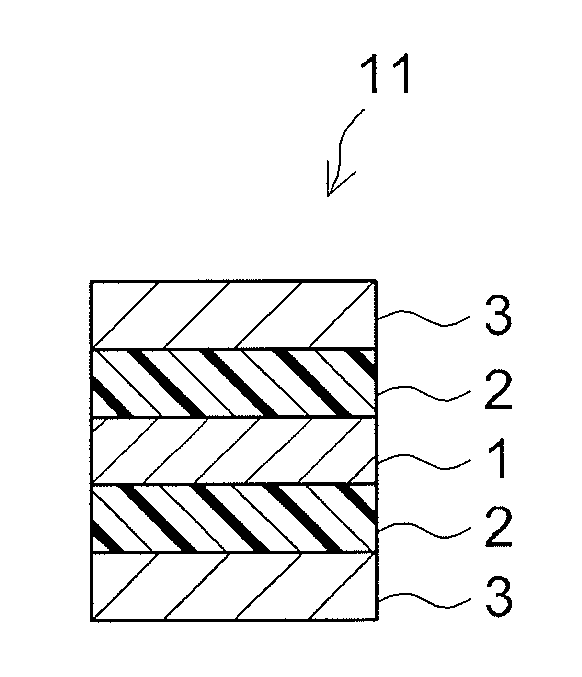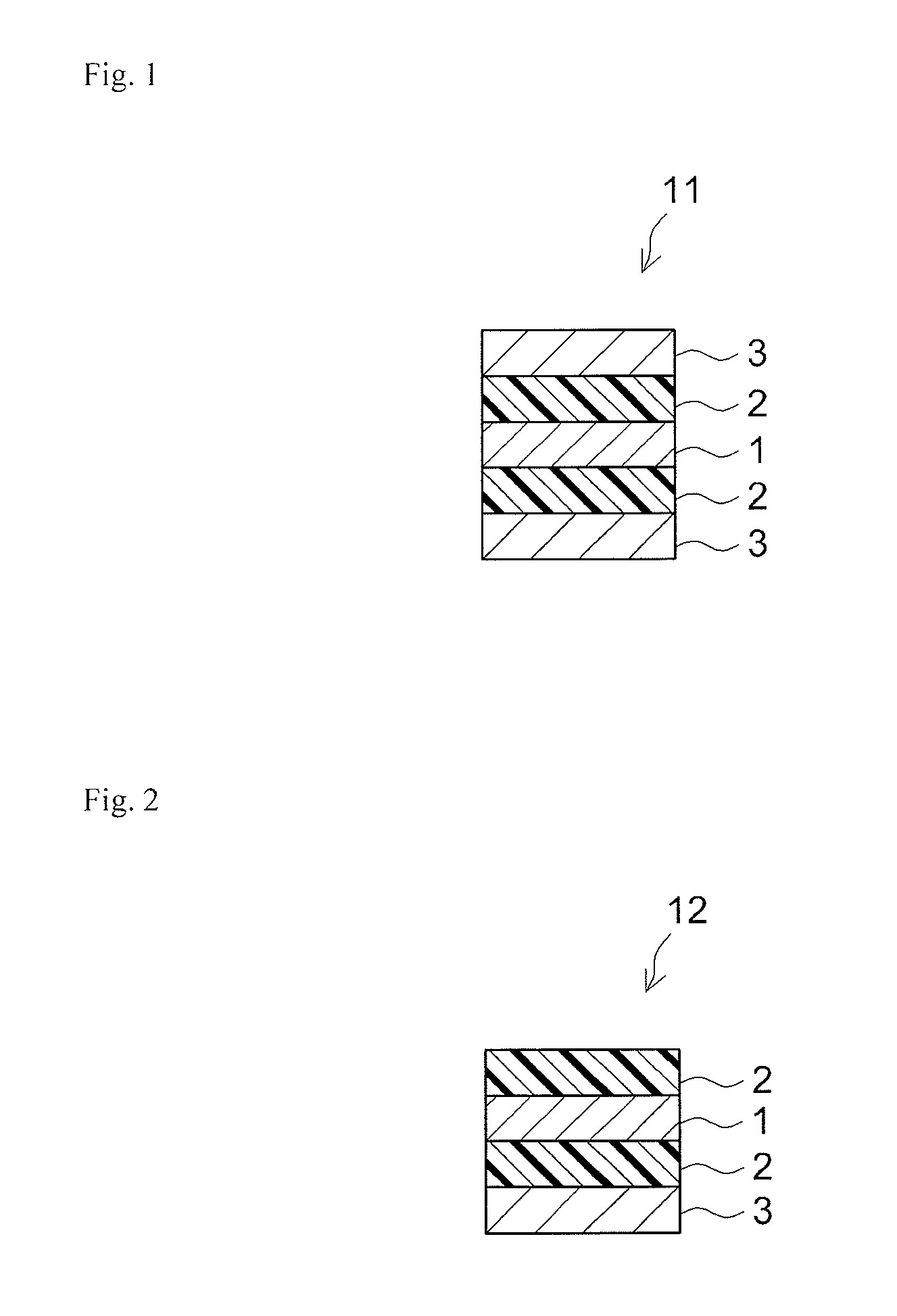Pressure-sensitive adhesive sheet
- Summary
- Abstract
- Description
- Claims
- Application Information
AI Technical Summary
Benefits of technology
Problems solved by technology
Method used
Image
Examples
example 1
[0090]A monomer emulsion was prepared by emulsifying 86.5 parts of butyl acrylate (BA), 9.6 parts of 2-ethylhexyl acrylate (2EHA), 3.8 parts of acrylic acid (AA), 0.07 part of 3-methacryloxypropyltrimethoxysilane (a silanol group-forming monomer available under the trade name “KBM-503” from Shin-Etsu Chemical) and 0.05 part of dodecanethiol (a chain transfer agent) in 29 parts of unsterilized room-temperature soft water (water for polymerization) in the presence of 2 parts of sodium polyoxyethylene lauryl sulfate (emulsifying agent).
[0091]A reaction vessel equipped with a condenser, a nitrogen inlet, a thermometer, a dropping tube and a stirrer was charged with 40 parts of unsterilized room-temperature soft water (water for polymerization) and 0.1 part of 2,2′-azobis[N-(2-carboxyethyl)-2-methylpropionamidine] hydrate (available under the trade name “VA-057” from Wako Pure Chemical Industries, Ltd.), and the mixture was stirred at 60° C. for 1 hour under nitrogen gas flow. While hold...
example 2
[0094]Aside from using UV-irradiated water as the water for polymerization, a PSA composition was obtained in the same way as in Example 1. A preservative (available under the trade name “Neo Sintol 2208” from Sumika Enviro-Science Co., Ltd.) was added in a ratio of 0.1% to this PSA composition, thereby giving the PSA composition of the present example. Aside from using this composition, a substrate-less PSA sheet and a double-sided PSA sheet according to this example were obtained in the same way as in Example 1.
example 3
[0095]Aside from using unsterilized soft water as the water for polymerization and the work-up water, a PSA composition, a substrate-less PSA sheet and a double-sided PSA sheet according to this example were obtained in the same way as in Example 1.
[0096]The following tests were carried out on each of the PSA compositions and PSA sheets obtained in Examples 1 to 3. The results are shown, together with details on each example, in Table 3. The amount of preservative added in Table 3 does not include the amount of preservative that was included beforehand in the tackifier and other ingredients employed in the respective examples.
Measurement of Total Emission of VOCs
[0097]Total emissions of VOCs was measured in accordance with the above-described method. Double-sided PSA sheets from the respective examples that had been cut to a size of 1 cm×5 cm were used as the samples. More specifically, a first PSA liner was removed from each PSA sheet, and aluminum foil was attached to the exposed ...
PUM
| Property | Measurement | Unit |
|---|---|---|
| Temperature | aaaaa | aaaaa |
| Temperature | aaaaa | aaaaa |
| Length | aaaaa | aaaaa |
Abstract
Description
Claims
Application Information
 Login to View More
Login to View More - R&D
- Intellectual Property
- Life Sciences
- Materials
- Tech Scout
- Unparalleled Data Quality
- Higher Quality Content
- 60% Fewer Hallucinations
Browse by: Latest US Patents, China's latest patents, Technical Efficacy Thesaurus, Application Domain, Technology Topic, Popular Technical Reports.
© 2025 PatSnap. All rights reserved.Legal|Privacy policy|Modern Slavery Act Transparency Statement|Sitemap|About US| Contact US: help@patsnap.com



